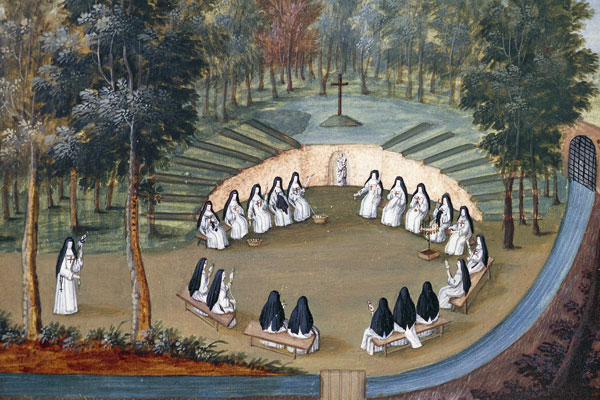This is a specialist book for non-specialist readers — by which I mean in part that it is made highly accessible to anyone seriously interested by excellent and lively writing rather than by any dumbing down. It may be an odd thing to say about a history of the intersection of platonic philosophy and Christian and Judaic spiritual theologies, but actually it is great fun. A good read.
Nonetheless it is also odd and unexpected. One of the oddities is the curious balance of silence and confessional in the authorial voice. It is a sign of the times, I think, when a book of this substance tells the reader more about the author’s sexuality than about his relationship to the faith he is discussing. He does try, but clearly for ‘serious’ academics, even those as media savvy and sympathetic to the reader as Diarmaid MacCulloch, subjectivity remains an awkward problem.
But the real reason it is an odd book is because it is really two different books not quite seamlessly stuck together. The first is a history of the philosophical roots of silence within the Christian tradition and I found it wonderful. Because of its intellectual and conceptual interests we are spared another run through of sweet anecdotes about the Desert Fathers (whom I love — but there have been a lot of books recently telling us how sweet they were and this does not need rehearsing yet again). Instead, the early chapters of the book address the slow start to ‘silence’ in the Hebrew scriptures, and the crucial Hellenisation of both Judaism and early Christianity and how and why that led to a more distant and silent deity.
This is so well done, and makes really pretty obscure material entirely available and tasty for the interested lay reader. There is a fascinating passage on the somewhat obscure non-Chalcedonian churches, especially in Syria, along with an intriguing speculation (freely admitted to be speculation) as to what, if anything, they might have been learning about apophasis from the Hinduism and Buddhism, given how strong their trading connections eastward were.
But for me the best bits were later — the widely referenced, but deftly brisk, account of silence in Western Catholicism (anyone who finds Teresa of Avila ‘one of the most down-to-earth explorers . . . [who] made contemplation seem disarmingly possible even to those with little confidence’ gets my vote).
Then I was both admonished and informed by the discussion of silence within the Protestant traditions — material that was new to me, although it should not have been. MacCulloch is particularly good at finding telling human anecdotes to illuminate his denser intellectual account and more abstract concerns. (Although surely Catherine of Siena was no wife and mother: so egregious an error that it should have been picked up.)
The other book in this book is about an entirely different sort of silence. Rather than being about the positive aspects of mystical and contemplative prayer, this second book is about all the dark things that have been silenced, or which are allowed to remain unspoken, unacknowledged or even deliberately hidden. Christian anti-Semitism, slavery and child abuse are the issues he focuses on; but sexuality, women, attitudes towards truth-telling and several more topics are all mentioned in passing.
The relationship between silence and shame indeed needs more exploration and MacCulloch says something truly helpful here: ‘The Enlightenment practice of history, part science, part story-telling and pragmatic observation of human nature, is a great gift to Christian truth.’ But I felt that he failed to link these two silences together, and was not able to make enough space within a single volume to do justice to these difficult cultural issues. It really needs to be a whole book in itself and I hope he will write it soon.
In the meantime the final pages here have a rather breathless quality as we hurtle from homosexuality among Anglo-Catholic clergy, the shame of the Holocaust, the connections between music and silence, New Age mind-body-spirit publications and the positive role of mystical theology in ecumenical endeavours. The final section needs perhaps to be wrapped in a deeper meditative silence to support the complexities and pain of its subject.
Finally, a whole third of the book is taken up with notes and references and suggested further reading in a way that is generous and helpful and encouraging. For all the problems it raises this is a rich engaging book. Read it.





Comments